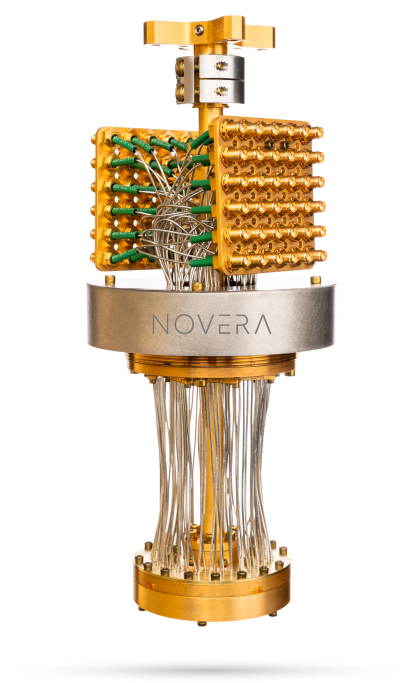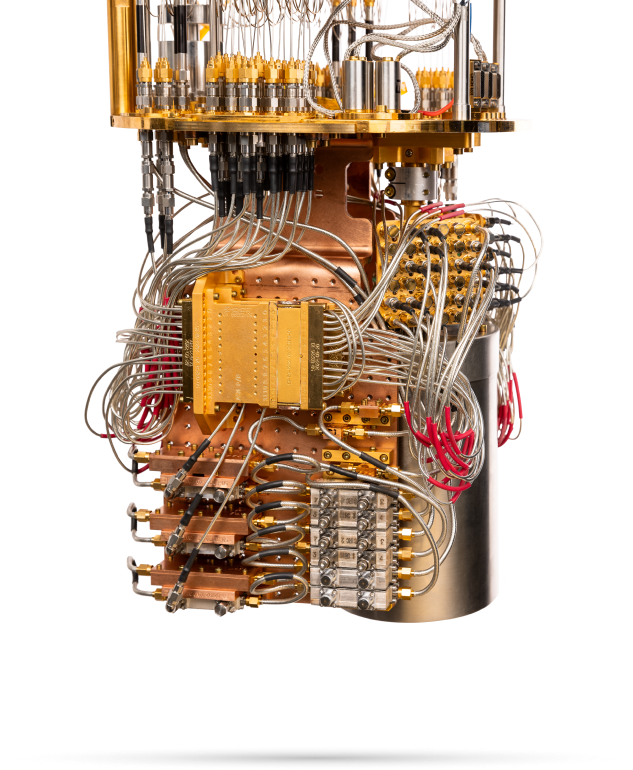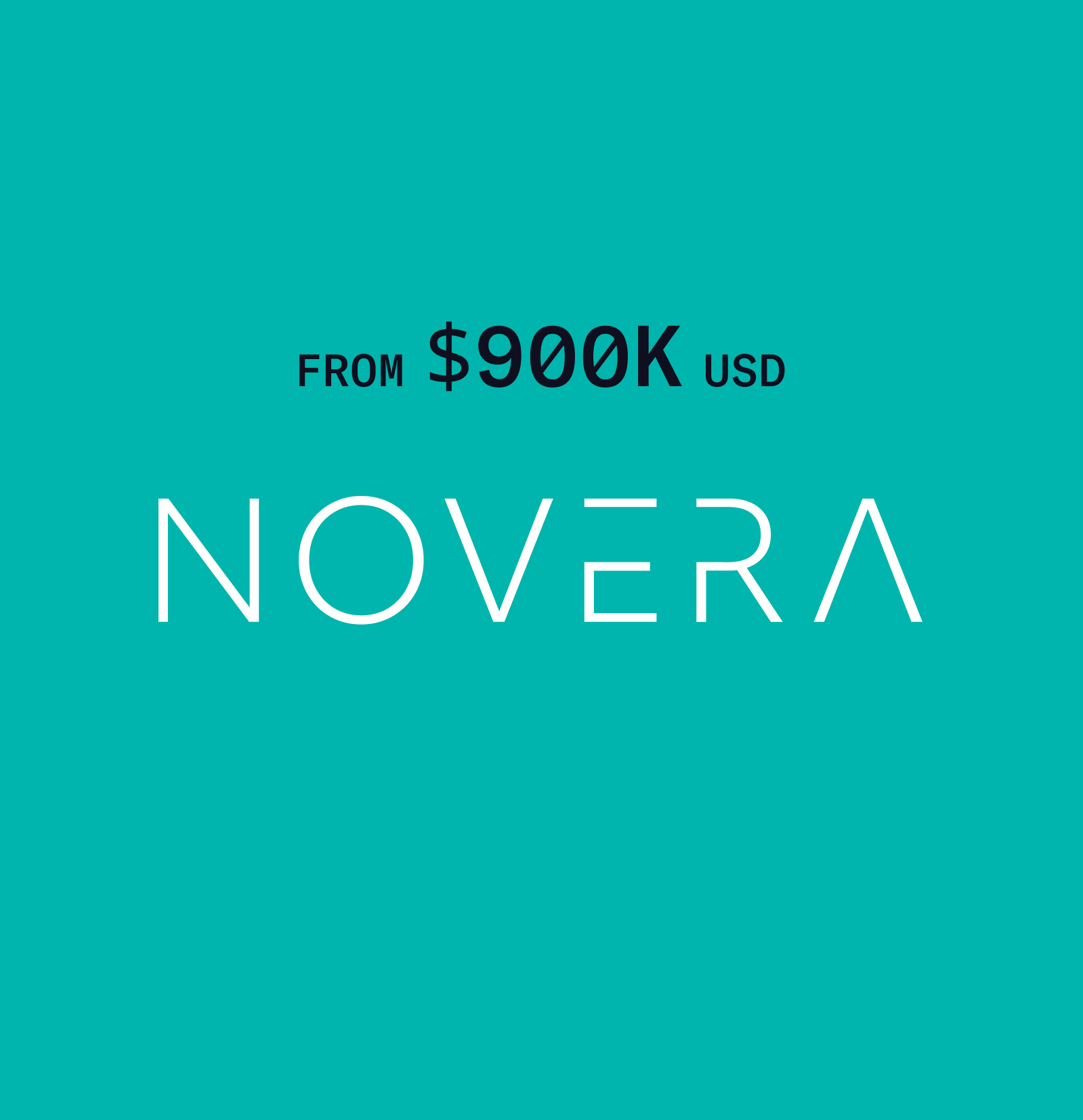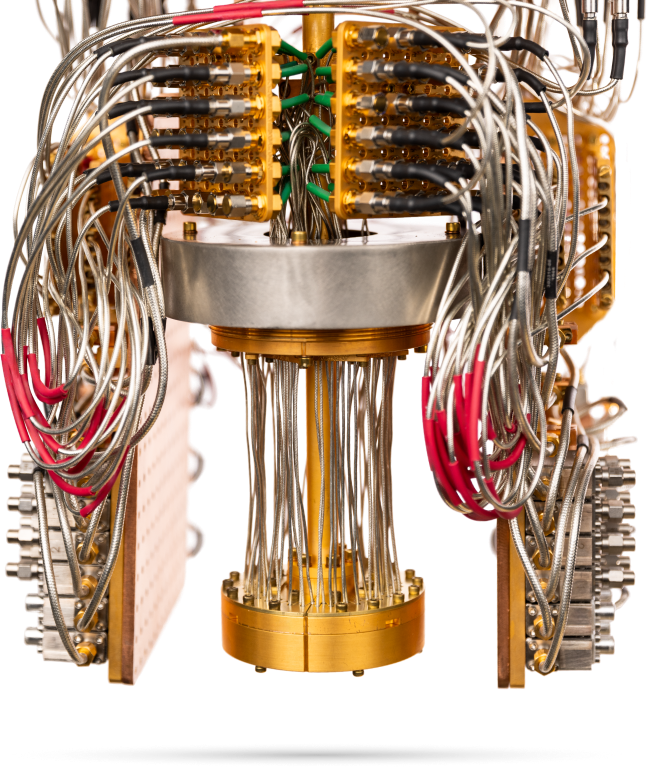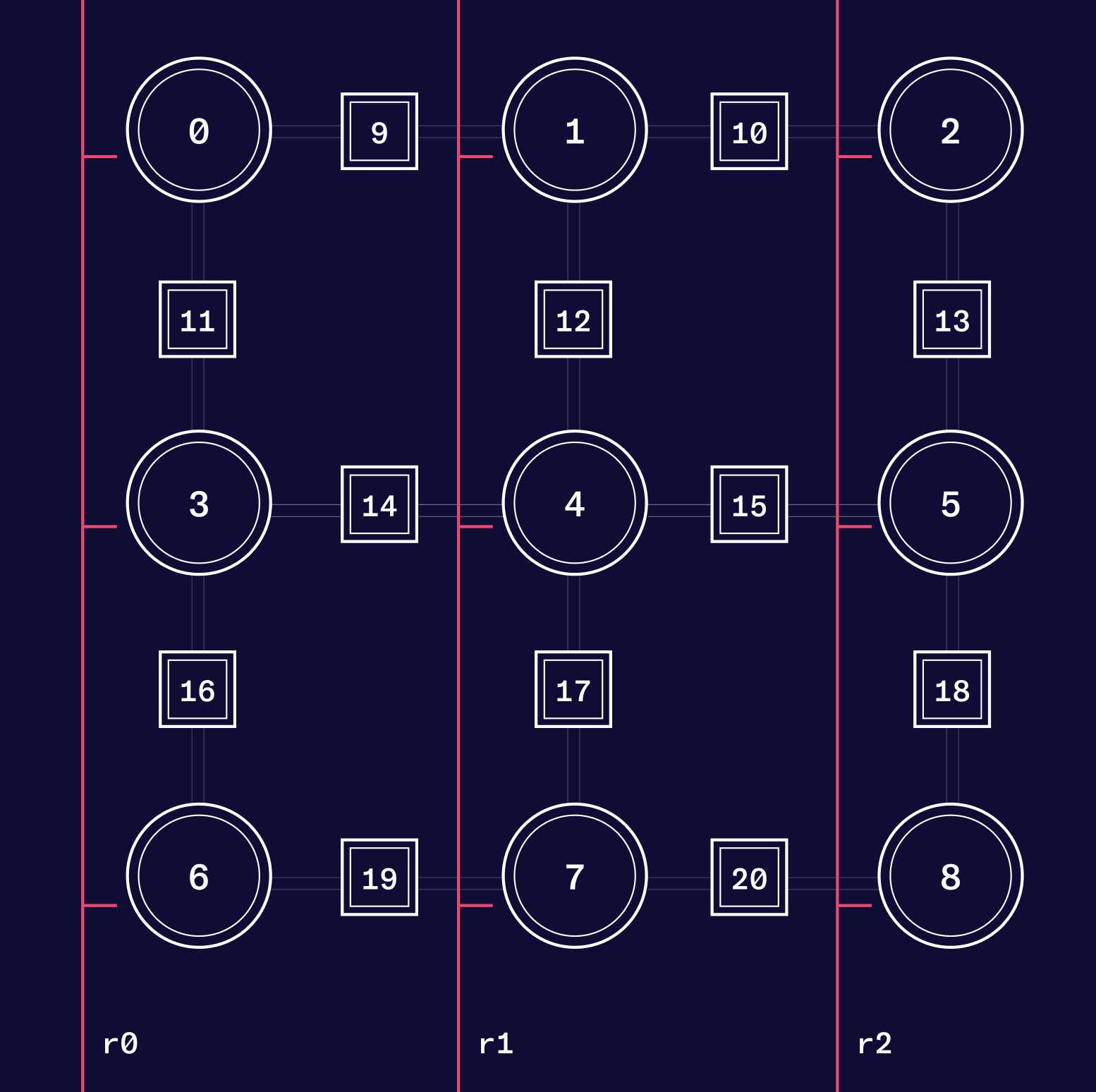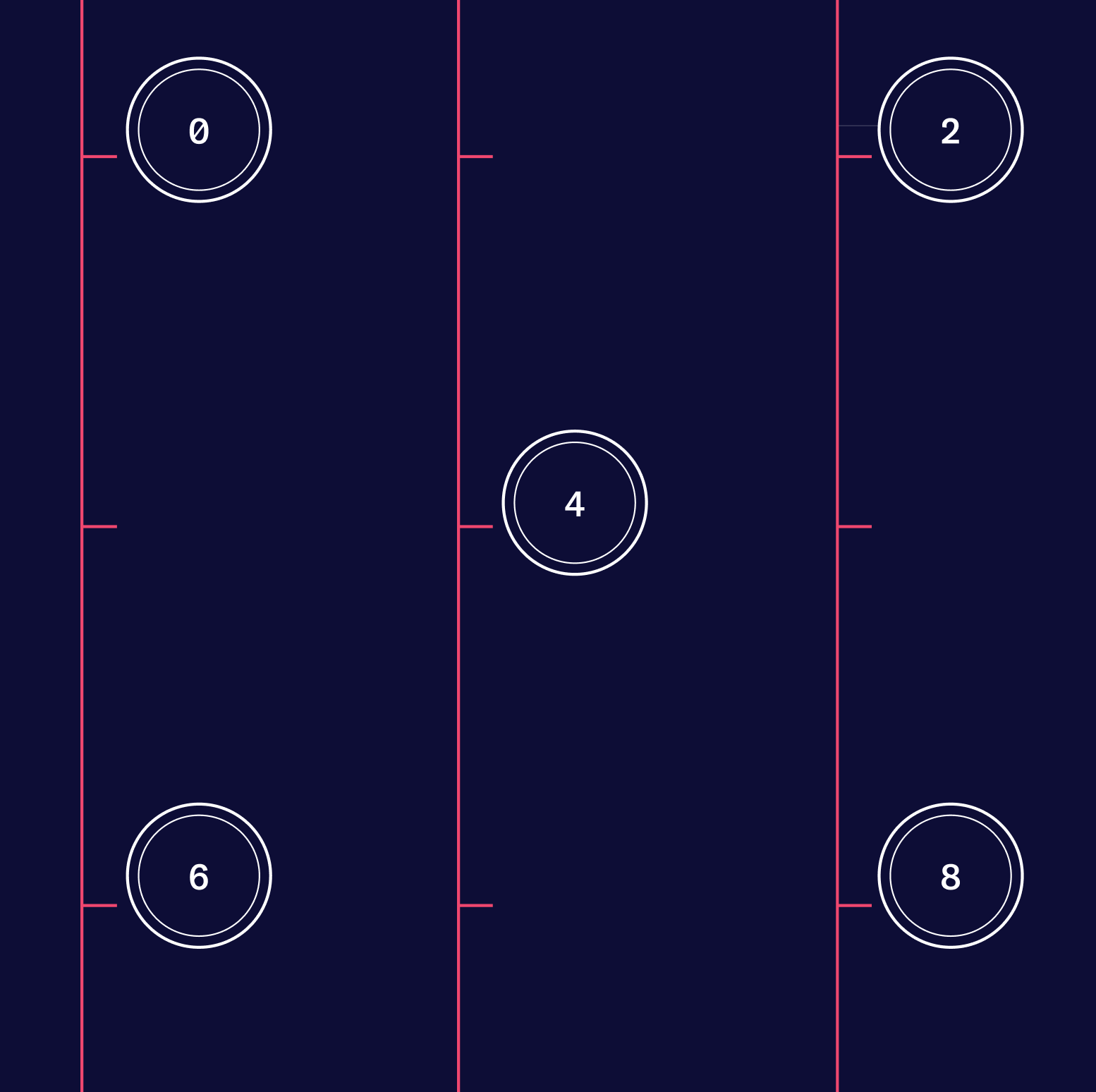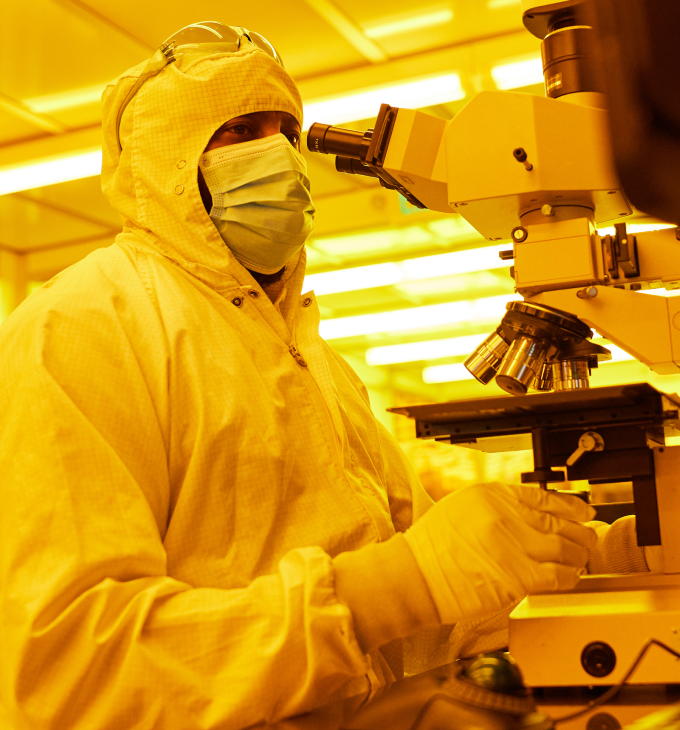After installing the Novera QPU and cooling down the dilution refrigerator, you are ready to interact with the qubits. Readout involves sending and receiving microwave pulses at the frequencies of the qubits’ readout resonators, and identifying the qubit states based on their dispersive shifts. To change the qubit states, you send pulses to the qubits at their transition frequencies. These protocols are easiest to develop on the 5-qubit chip.
Operation of the 9-qubit chip is more complicated. First, the qubits’ transition frequencies can be tuned by applying DC flux currents. Secondly, there are tunable couplers between adjacent qubits on the chip which are also modified using flux currents. Thirdly, when first cooled down, the qubits are strongly interacting by default, which makes operation initially more complicated. An important step is finding the flux conditions that put all qubits in a non-interacting state, which makes subsequent operations easier.
The next phase is implementing two-qubit gates. There are many possible schemes, and this is an active area of research and development in the superconducting qubits community. Between the tunable qubits and tunable couplers, one can use flux pulses to do fast entangling operations in a variety of ways.
DOWNLOAD PRODUCT SHEET
